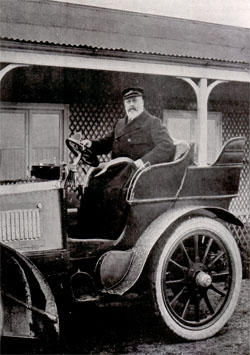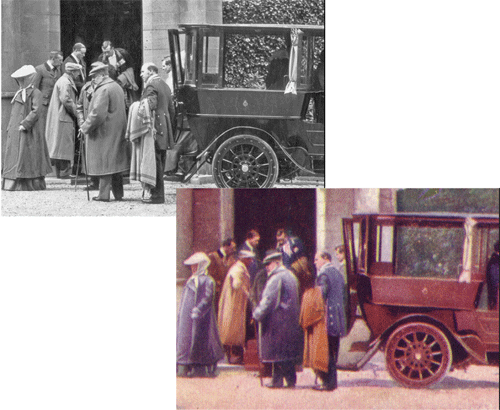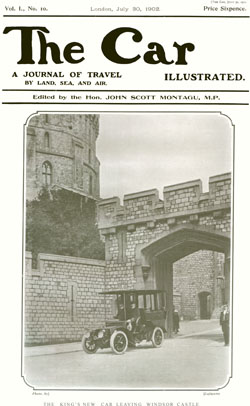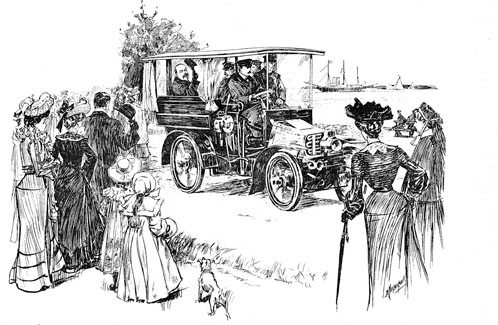King Edward VII and his DaimlersVIIMonarchs far and wide quickly noticed the practicality and amusement of owning a motor car and the early years of the 20th century saw press portraits of motoring monarchs from as far afield as Afghanistan and China. In this Lafayette portrait, King Edward VII is seen on a 24 hp Daimler belonging to Lord Montague of Beaulieu. The King had bought his first Daimler in 1900 - setting a royal tradition that was to last until 1960 when the royal family switched to using Rolls Royce cars.
|
||||||||||||
 |
||||||||||||
 |
||||||||||||
In the black and white image to the right, released by the Lafayette press department, the King and his suite were photographed arriving for a visit to Lismore Castle in 1904. This image soon appeared in shops as a hand-coloured postcard. However, in the coloured version, the ungainly back view of Queen Alexandra stepping out of the car had been removed! The Queen wrote to her children that she had every confidence in their father as a driver: “I poke him violently in the back at every corner to go gently and whenever a dog, child or anything else comes in our way!” |
||||||||||||
The King had first shown an interest in Daimler motor cars in 1896 when he was given a demonstration of their first 4-cylinder vehicle in the grounds of Buckingham Palace in London. Published images by Lafayette, of King Edward VII’s new 22 hp Daimler by the entrance to Windsor Castle, show that by 1902 the newly crowned monarch had already became a patron of the first British motor car manufacturing concern. One of these photographs found its way to the front cover of The Car Illustrated magazine in June 1902. The King’s fondness for car travel greatly helped the campaign for acceptability and respectability of the emerging mode of transportation. This line drawing (below) which appeared in The Daily Graphic in August 1902, entitled “the King’s holiday” shows how readily the royal family took to the motor car as a comfortable means of travel, and thus promoted it as a new form of recreation. |
||||||||||||
 |
||||||||||||
 |
||||||||||||
All texts copyright Barbara Borkowy and Russell Harris 2007
